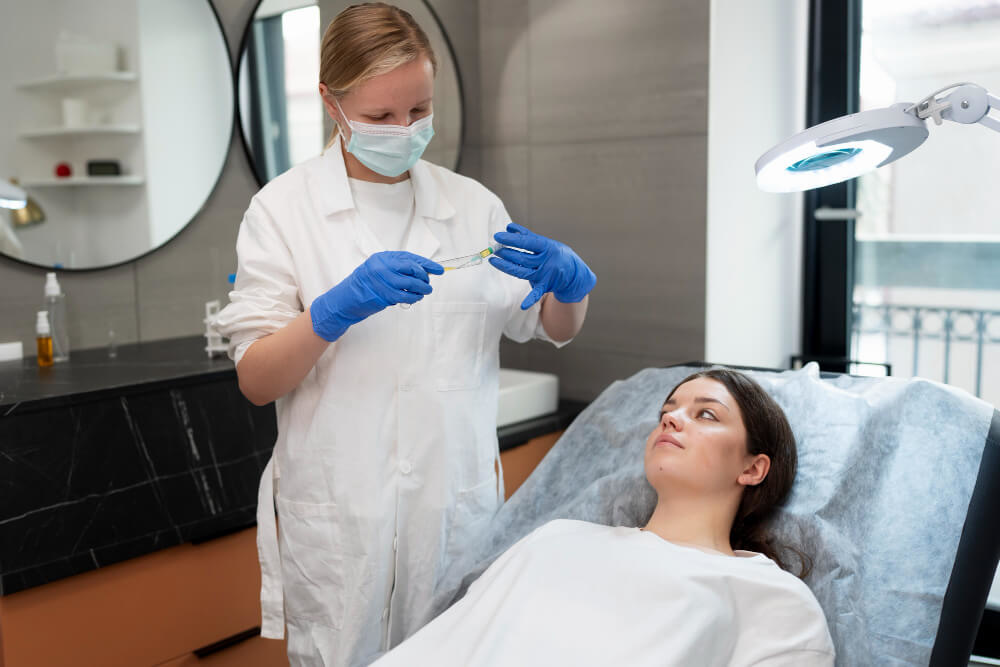Unlocking Your Body’s Healing Power: A Guide to Regenerative Medicine
Imagine your body possessed its own internal repair crew, a team of microscopic workers capable of mending injuries, soothing inflammation, and even rebuilding damaged parts from the inside out. For generations, this idea seemed like science fiction. Today, it is the foundational principle of one of the most exciting and rapidly advancing fields in healthcare.
This field is known as regenerative medicine. It represents a fundamental shift in how we approach disease and injury, moving beyond merely managing symptoms to actively promoting healing and restoration. The core idea is to harness the body’s innate power to regenerate and repair itself, giving it the tools and signals it needs to overcome damage caused by age, disease, or trauma. By understanding and leveraging these natural processes, regenerative medicine offers profound new hope for countless conditions that were once considered chronic or untreatable.
Instead of introducing external solutions to patch a problem, this approach works from within. It seeks to provide the biological building blocks and instructions necessary for your own cells to do the work. This is not just a new treatment; it is a new philosophy of healing that could redefine our health and longevity.

What Exactly Is Regenerative Medicine?
At its heart, regenerative medicine is a branch of medical science focused on developing therapies to regrow, repair, or replace damaged or diseased cells, tissues, or organs. Think of it as restorative biology put into practice. It aims to resolve the root cause of a problem rather than simply masking the pain or dysfunction it creates.
Traditional medicine often excels at managing symptoms. A painkiller can block pain signals, and a steroid can reduce inflammation, but neither addresses the underlying tissue damage. Regenerative medicine takes a different route. It asks: what if we could help the body rebuild that torn cartilage or regenerate those damaged cells?
The goal is to restore normal function. This is achieved by delivering specific types of cells or cell products to injured areas, stimulating the body’s own repair mechanisms to get to work. It’s a cooperative effort between advanced medical technology and the body’s ancient, powerful healing intelligence.

How Does Regenerative Medicine Work?
The field employs several sophisticated strategies to kickstart the body’s healing cascade. While the science can be complex, the core methods revolve around a few key concepts. These approaches can be used alone or in combination to create a personalized treatment plan designed to target a specific issue.
These therapies are not about introducing something foreign to the body. Instead, they typically use biological materials sourced from the patient or a carefully screened donor to supplement and amplify the natural healing process. This is what makes the field so powerful and promising.

What Are Stem Cells and What Do They Do?
Stem cells are perhaps the most famous component of regenerative medicine. These are unique, unspecialized cells that have the remarkable potential to develop into many different cell types in the body. Think of them as the body’s master cells or internal raw materials.
When we are young, stem cells are abundant, helping us grow and quickly recover from injury. As we age, the number and potency of our stem cells decline, which is one reason why healing slows down. Regenerative therapies often involve harvesting stem cells, concentrating them, and then reintroducing them to an area of injury or degeneration.
Once at the target site, these cells can perform several critical functions. They can differentiate into specialized cells, like cartilage or muscle cells, to replace damaged ones. More importantly, they act as powerful signaling hubs, releasing growth factors and other proteins that orchestrate a healing response. They reduce inflammation, protect existing cells from further damage, and call the body’s own local repair cells into action.

What Is Tissue Engineering?
Tissue engineering is another fascinating pillar of regenerative medicine. This approach combines cells, engineering, and materials science to improve or replace biological tissues. It often involves the use of a scaffold, which is a supportive structure that guides the growth of new tissue.
Imagine you want to repair a piece of damaged cartilage in a knee. A clinician might use a biodegradable, porous scaffold shaped like the missing piece of cartilage. This scaffold is then seeded with the patient’s own cells. When placed in the body, the scaffold provides the perfect environment and structure for the cells to multiply and form new, healthy cartilage. Over time, the scaffold harmlessly dissolves, leaving only the newly generated tissue behind.
This technology is already being used to create skin grafts for burn victims and is being researched for building more complex structures, including blood vessels, bladders, and even entire organs. The ultimate goal is to one day create custom-made replacement parts for the body on demand.

What Are Other Key Therapies Involved?
Beyond stem cells and tissue engineering, other substances play a vital role. Platelet-Rich Plasma, or PRP, is one of the most common regenerative therapies. It involves drawing a patient’s own blood, separating the platelets in a centrifuge, and injecting the concentrated platelet solution into an injured area. Platelets are packed with growth factors that are essential for healing, making PRP a powerful tool for treating joint injuries, tendonitis, and even hair loss.
Another emerging area involves exosomes. These are tiny vesicles released by cells, especially stem cells, that act as messengers. They carry proteins and genetic information to other cells, instructing them on how to behave. Exosome therapy delivers these powerful signaling packages directly to a target site to stimulate regeneration without transplanting whole cells.

What Conditions Can Regenerative Medicine Potentially Address?
The applications for regenerative medicine are vast and continue to expand as research progresses. Because it targets the fundamental process of healing, its potential extends across nearly every field of medicine, from orthopedics to cardiology and aesthetics.
While many therapies are still being studied, others are already providing significant relief and functional improvement for patients in clinical settings around the world. The focus is on conditions where the body’s natural ability to heal is insufficient or has been overwhelmed.

Can It Help With Joint Pain and Orthopedic Issues?
Orthopedics is one of the areas where regenerative medicine has made its biggest impact so far. Millions of people suffer from chronic pain due to conditions like osteoarthritis, where the protective cartilage in joints wears down over time. Traditional treatments often involve pain management, physical therapy, and eventual joint replacement surgery.
Regenerative therapies like stem cell injections and PRP offer a less invasive alternative. By introducing growth factors and cells that can reduce inflammation and potentially stimulate cartilage repair, these treatments can alleviate pain, improve mobility, and delay or even prevent the need for major surgery. They are also widely used for soft tissue injuries like tendon and ligament tears, helping athletes and everyday individuals recover faster and more completely.

What About Chronic Diseases and Organ Damage?
The potential of regenerative medicine to address systemic and chronic diseases is where its true revolutionary power lies. Researchers are actively investigating its use for some of the most challenging health problems we face. For conditions like heart disease, the goal is to use cell therapies to repair heart muscle damaged by a heart attack.
In diabetes, scientists are working on ways to regenerate the insulin-producing beta cells in the pancreas. For neurodegenerative diseases like Parkinson’s or multiple sclerosis, the hope is that regenerative therapies could help repair damaged neural tissue and restore lost function. While much of this work is still in clinical trials, the preliminary results are incredibly promising and point to a future where we can reverse damage rather than just slow its progression.

Is It Used in Aesthetics and Anti-Aging?
The principles of regeneration are also being applied to aesthetics and longevity medicine. As we age, our skin loses collagen and elasticity, and our bodies become less efficient at repair. Regenerative treatments can help counteract these effects. For example, PRP and microneedling can stimulate collagen production, leading to smoother, healthier-looking skin.
Cell therapies are also being used to treat hair loss by rejuvenating dormant hair follicles. Beyond surface-level aesthetics, this connects to the broader goal of healthy aging. Optimizing the body’s internal environment is key, and this includes balancing hormonal systems. For medical professionals, understanding the interplay between cellular health and systemic factors is crucial, which is why specialized training on the safe application of hormonal therapies in older adults is becoming an essential part of a comprehensive anti-aging practice.

What Is the Future of Regenerative Medicine?
The future of this field is exceptionally bright, with innovations happening at a breathtaking pace. Scientists are pushing the boundaries of what’s possible, moving from repairing tissues to creating them from scratch. One of the most futuristic concepts is 3D bioprinting, where ‘bio-ink’ made of living cells is used to print complex tissues and, one day, fully functional organs for transplantation. This could eliminate organ donor waiting lists entirely.
Personalization is another key trend. In the future, treatments will be tailored to an individual’s unique genetic makeup and specific condition. Doctors will be able to select the precise type of cell or growth factor needed to achieve the best outcome for a particular patient. This level of precision will make therapies more effective and safer than ever before.
Ultimately, the field is driving a paradigm shift from reactive to proactive healthcare. The focus will move from managing sickness to cultivating wellness and resilience, extending not just our lifespan but our ‘healthspan’—the number of years we live in good health and full function.

How Is This Field Regulated and Who Performs These Procedures?
With such powerful potential, it is critical that regenerative medicine is practiced safely and ethically. Regulatory bodies like the FDA in the United States carefully oversee the development and application of these therapies. Some treatments, like certain applications of PRP, are considered part of the practice of medicine, while others, especially those involving more than minimal manipulation of cells, are regulated as drugs or biologics and require extensive clinical trials to prove their safety and efficacy.
This complexity means that patients must seek out highly qualified and experienced healthcare professionals. Performing these procedures requires a deep understanding of cell biology, anatomy, and clinical best practices. The rapid evolution of the field also necessitates a commitment to ongoing education. Leading medical professionals often pursue advanced regenerative medicine fellowship and certification programs to stay at the forefront of the science and techniques.
Specialized training is paramount for ensuring patient safety and optimal outcomes. For instance, practitioners using stem cells must have a thorough understanding of their source and function, which is why dedicated clinical training in stem cell therapy MSCs adipose derived is so important. This rigorous education is built upon a strong academic foundation, with top-tier institutions like Stanford and Wake Forest offering graduate programs that are shaping the next generation of experts.
For both patients and practitioners, staying informed is key. Professional organizations like the International Society for Stem Cell Research provide credible information and advocate for responsible science. Additionally, industry resources such as RegMedNet offer a platform for professionals to share knowledge and collaborate on the latest advancements, ensuring the entire field moves forward together on a solid foundation of evidence and expertise.

What Should Patients Consider Before Pursuing Treatment?
If you are considering a regenerative therapy, it is vital to approach it as an educated consumer. The first step is to have a thorough consultation with a qualified physician to determine if you are a good candidate. A reputable provider will conduct a comprehensive evaluation, discuss all your options, and provide a realistic outlook on potential outcomes.
It is important to manage expectations. While regenerative medicine can produce remarkable results, it is not a miracle cure. Healing takes time, and outcomes can vary based on the individual, the specific condition, and the severity of the damage. Be wary of clinics that promise guaranteed results or promote unproven therapies.
Ask critical questions about the procedure. What is the source of the cells or biologics being used? What are the provider’s qualifications and experience with this specific therapy? What is the scientific evidence supporting its use for your condition? Understanding the costs is also important, as many of these advanced treatments are not yet covered by insurance.
Choosing the right clinic is the most important decision you will make. Look for a practice that prioritizes patient education, operates with transparency, and is committed to evidence-based medicine. Your health is your most valuable asset, and placing it in the hands of a skilled and ethical professional is essential for a safe and successful journey with regenerative medicine.
Regenerative medicine is more than just a medical specialty; it is a new frontier in human health. By tapping into the body’s own remarkable capacity for renewal, it offers the potential to heal injuries, reverse disease, and enhance our vitality in ways we are only just beginning to understand. It is a testament to the power of biology and a beacon of hope for a healthier future.
Frequently Asked Questions

How can I feature patient success stories without making unproven claims?
To ethically showcase patient success, focus on their subjective experience and quality-of-life improvements rather than making objective medical claims. Use direct quotes that describe their journey, such as their ability to resume a favorite hobby or their personal feelings about their progress. Always secure explicit written consent before sharing any story or image, and clearly state that their experience is not a guarantee of results for others.
Furthermore, frame these stories as individual case studies that highlight the patient’s personal goals and the process they underwent. Accompany every testimonial with a clear and prominent disclaimer explaining that results can vary significantly and that the story represents one person’s outcome. This approach builds trust by managing expectations and prioritizing patient education over unsubstantiated hype.

What are the biggest ethical pitfalls to avoid on social media for a regenerative medicine clinic?
The most significant pitfall on social media is using overly simplified, hype-driven language that can easily mislead your audience. You must avoid definitive terms like "miracle," "cure-all," or "guaranteed results" and be extremely cautious with before-and-after images, which can imply a typical outcome without proper context. Another major risk is engaging in medical discussions in comments or direct messages, as this can be interpreted as providing medical advice without a formal patient-physician relationship.
It’s also crucial to avoid partnering with influencers who may not grasp the scientific nuances and could misrepresent your therapies. Instead, concentrate on creating educational content that explains the science in an accessible manner, introduces your qualified team, and sets realistic expectations about the treatments. Your social media presence should be a source of credible information, building authority through transparency and accuracy rather than sensationalism.

Besides avoiding the word "cure," what other specific language should my marketing avoid?
To remain compliant and ethical, you must avoid any language that implies your therapies are FDA-approved to treat specific diseases, unless that is verifiably true for your specific product. Steer clear of definitive medical claims such as "reverses aging," "regenerates cartilage," or "prevents arthritis," as these are unsubstantiated. Instead, use more precise and defensible phrasing like "supports the body’s natural healing mechanisms" or "aims to reduce inflammation and improve function."
Additionally, avoid making direct comparisons that claim your treatments are superior to established medical procedures without robust, peer-reviewed clinical data to support it. Phrases like "safer than surgery" or "a better alternative to medication" are regulatory red flags and can create false hope. The objective is to accurately describe your services and their potential without promising a specific medical result or guaranteeing safety and efficacy.
Discover the most comprehensive functional medicine training, longevity training, and biohacking certification programs designed specifically for healthcare professionals, medics, and clinic owners who want to master regenerative medicine protocols and anti-aging therapies. Elevate your practice with Talking Longevity.







